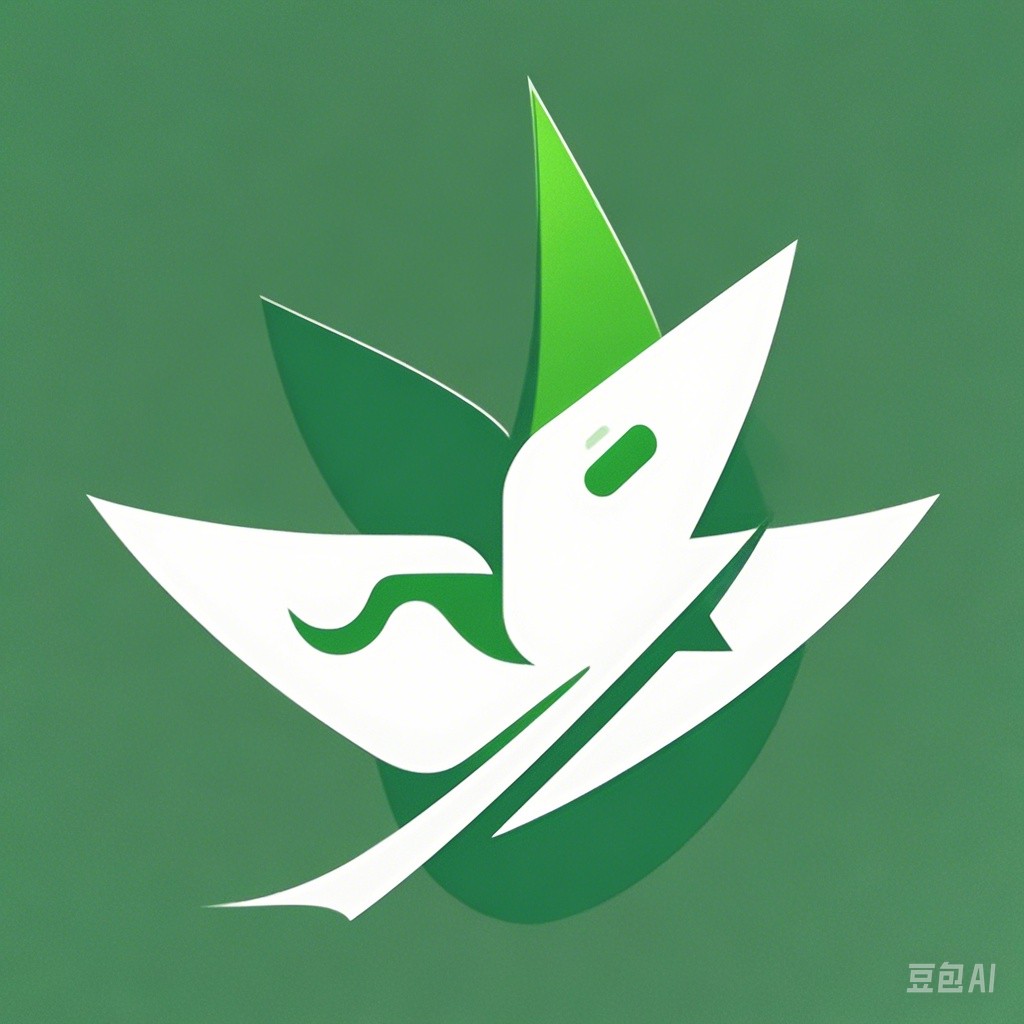比利时,这个位于欧洲西北部的国家,以其开放的社会环境和高质量的教育体系而闻名。在这个国家,孩子们从小就被培养独立和全球视野的能力。以下将从教育体系、文化环境、以及国际化项目等方面,揭秘比利时如何培养孩子的独立与全球视野。 教育体系 1. 轻松的学习环境 : 比利时儿童每天上学轻松愉快,没有繁重的家庭作业。教育注重实践和动手能力,一半的课程是让学生动手制作模具,培养他们的创造力。 2.
引言 性教育是现代社会中不可或缺的一部分,它不仅关乎个体的身心健康,也关系到整个社会的和谐发展。比利时作为欧洲国家之一,在性教育方面有着丰富的经验和成熟的体系。本文将深入探讨比利时性教育的特点,并介绍一些实用的指南,帮助读者更好地理解和应用。 比利时性教育的背景 1. 政策支持 比利时政府高度重视性教育,将其纳入国家教育体系。政府制定了一系列政策,确保性教育在各级教育阶段得到充分实施。 2.
引言 在当今社会,教育成为培养下一代的重要环节。比利时九岁神童西蒙斯的成长经历,引发了全球对于特殊教育模式的关注。本文将揭秘西蒙斯成长背后的秘密法则,以及如何将这些法则应用于我们的家庭教育中。 西蒙斯的成长背景 2009年,西蒙斯出生于比利时一个医生家庭。由于父母工作繁忙,他在祖父母身边长大。西蒙斯从小展现出惊人的学习能力和广泛的兴趣。在父母发现他的智力后,开始对他的教育进行特别的关注。
比利时,这个位于欧洲心脏地带的国家,以其高质量的教育体系和多元的文化氛围,成为越来越多留学生的选择。本文将从教育专业优势、留学生活等方面全面解析比利时留学的方方面面。 一、比利时教育专业优势 1. 高质量的教育体系 比利时拥有世界一流的教育体系,其高等教育机构在国际上享有盛誉。比利时的大学分为荷兰语区、法语区和德语区,每个区域都有其独特的教学语言和文化背景。比利时的高等教育机构包括综合性大学
引言 在快速发展的现代社会,教育面临着前所未有的挑战和机遇。传统的教育模式在培养知识型人才方面取得了显著成果,但随着社会对创新能力和综合素质要求的提高,探索创新教育新途径已成为教育改革的重要议题。本文旨在解码传统智慧,探讨如何将传统教育与现代科技相结合,为创新教育提供新的思路。 传统智慧的传承与创新 1. 传承经典,弘扬文化 传统教育强调经典文化的传承,培养学生的道德品质和文化素养。在创新教育中
引言 比利时,作为欧洲的一个重要国家,拥有多元文化和多语言的教育体系。然而,在追求教育质量的同时,如何实现跨区域的教育均衡,成为了一个亟待解决的问题。本文将深入探讨比利时教育在跨区域均衡方面面临的挑战,并提出相应的解决方案。 比利时教育现状 多元文化背景 比利时是一个多元文化和多语言的国家,法语区和荷语区的教育体系存在显著差异。这种文化多样性在教育领域也有所体现
引言 1991年,比利时经历了一场深刻的社会健康革命,这场革命不仅改变了当地居民的生活习惯,也对全球健康教育产生了深远影响。本文将回顾那个时代的比利时健康教育之道,分析其成功因素,以及对我们今天健康教育的启示。 健康革命的背景 在1991年之前,比利时面临着严重的健康问题,包括肥胖、吸烟、心血管疾病等。这些问题的根源在于不良的生活习惯,如高热量饮食、缺乏运动和吸烟等。为了应对这些挑战
比利时生物教育在全球范围内以其创新和实践性而闻名。本文将探讨比利时生物教育的创新之路,包括教育体系、教学方法、科研合作以及与产业的紧密联系等方面。 教育体系 比利时的生物教育体系注重培养学生的科学素养和实践能力。以下是一些关键特点: 1. 混合型教育模式 比利时的高等教育采用混合型模式,结合了理论教学和实践训练。这种模式有助于学生将理论知识应用于实际操作。 2. 强调跨学科学习
比利时,这个位于欧洲心脏地带的国家,以其高质量的教育体系、多元的文化环境和相对较低的留学成本,吸引了越来越多的国际学生。对于想要攻读博士学位的国际学生来说,比利时提供了丰富的学术资源和独特的学术体验。以下是比利时教育博士留学的全攻略。 一、比利时教育体系概述 比利时是一个联邦制国家,教育体系分为联邦、大区和社区三个层次。高等教育主要由联邦层次负责,包括大学和高等学院
引言 比利时学期教育大学(University of Leuven, UCL)是欧洲最古老和最著名的大学之一,以其卓越的学术声誉和独特的教育体系而闻名。本文将深入探讨比利时期学期教育大学的教育模式,揭示其培养未来精英的秘密武器。 大学背景 历史沿革 比利时学期教育大学成立于1425年,是世界上最古老的大学之一。自成立以来,大学一直致力于提供高质量的教育和研究。 地理位置
比利时,这个位于欧洲十字路口的国家,以其丰富的文化历史和先进的教育体系著称。1991年,比利时教育领域发生了一系列重大变革,这些变革不仅深刻影响了比利时的教育格局,也对全球教育产生了深远的影响。本文将解码这些变革,带您了解那些改变世界的视频。 一、背景:比利时教育体系概述 在深入探讨1991年的教育变革之前,我们先来简要了解一下比利时的教育体系。 比利时的教育体系分为四个阶段:学前教育、基础教育
比利时,作为欧洲的教育强国,其教育经费的投入与成效平衡之道备受瞩目。本文将从比利时的教育经费投入、分配机制以及成效等方面进行详细剖析。 一、比利时教育经费投入概述 1. 投入规模 比利时政府高度重视教育事业,对教育经费的投入逐年增长。根据最新数据显示,教育经费占国内生产总值的比例超过6%,远高于欧盟平均水平。 2. 投入结构 比利时的教育经费主要分为以下几个部分: 学前教育 :学前三年半(2
引言 比利时佛兰德地区以其独特的教育模式而闻名,其教育体系融合了多种元素,旨在培养具有全球视野、创新精神和实践能力的人才。本文将深入探讨佛兰德教育的特点,分析其成功之处,并展望其未来的发展趋势。 一、佛兰德教育的多元化特点 1. 多元文化背景下的教育融合 佛兰德地区拥有多元的文化背景,这为教育提供了丰富的资源。学校鼓励学生了解和尊重不同的文化,培养他们的国际视野和跨文化交流能力。 2.
比利时在1991年进行了一次性教育改革,这一改革不仅在当时引起了广泛关注,而且其影响至今仍在持续。本文将从改革背景、主要内容、实施效果以及对中国性教育改革的启示与反思等方面进行详细探讨。 一、改革背景 20世纪80年代末至90年代初,比利时社会面临着性传播疾病(STDs)的蔓延、青少年怀孕率上升以及性观念的多元化等问题。这些问题促使比利时政府开始关注性教育,并寻求通过改革来提高性教育的质量和效果
比利时原子塔,这座被誉为“比利时的埃菲尔铁塔”的建筑,不仅是布鲁塞尔的标志性建筑,更是欧洲教育创新的一个奇迹。自1958年布鲁塞尔世界博览会以来,原子塔以其独特的建筑风格和丰富的教育内涵,吸引了无数游客和学者。 原子塔的诞生 原子塔最初是为1958年布鲁塞尔世界博览会而设计的,由比利时工程师André Waterkeyn设计。其灵感来源于铁原子的晶体结构
比利时,这个位于西欧的弹丸之地,以其创新的经济、先进的教育科技和多元的文化而闻名。本文将深入解码比利时的教育科技发展,揭示其如何引领课堂革命,塑造未来教育。 比利时教育科技的发展背景 比利时自1830年建国以来,一直重视教育。经过多年的发展,比利时已成为世界上教育最先进的国家之一。其教育体系涵盖了从幼儿教育到高等教育的各个阶段,注重素质教育,强调学生的个性发展和创新能力。 政府投资与政策支持
比利时,这个欧洲小国,以其独特的足球魅力闻名于世。从21世纪初开始,比利时足球经历了从低谷到巅峰的蜕变,这其中离不开学校教育在人才培养方面的关键作用。本文将深入剖析比利时足球学校教育的奥秘,并探讨其对我国教育发展的启示。 比利时足球学校教育体系 1. 全面学习荷兰经验 比利时足球在21世纪初面临人才凋零的困境,为此,比利时足协开始全面学习邻国荷兰,制定并实施了《比利时足球复兴计划》。 2.
比利时,这个位于欧洲心脏地带的国家,以其独特的教育体系在全球范围内享有盛誉。根据最新的国际排名,比利时的大学在全球范围内位居前列,其中不少大学在特定领域表现尤为突出。本文将深入探讨比利时教育体系的秘密,以及其背后的挑战。 强大的教育体系 比利时的教育体系备受国际关注,不仅在欧洲,也是全球知名的。教育机构齐全,包括预科院校、大学和高等职业学校等,都可以满足不同学生的需求。此外
比利时,这个位于欧洲心脏地带的小国,以其高质量的教育体系而闻名于世。本文将深入探讨比利时基础教育的特点、改革历程以及其成功背后的秘诀。 一、比利时基础教育概述 比利时教育体系分为三个阶段:基础教育(Elementary education)、中学教育(Secondary education)和高等教育(Higher education)。基础教育阶段包括学前教育(3年)和初等教育(6年)
引言 性教育作为一门涉及广泛社会议题的学科,其改革与发展一直是全球关注的焦点。1991年,比利时开启了一场性教育改革的变革之旅,为全球性教育改革提供了宝贵的经验和启示。本文将深入探讨比利时性教育改革的历史背景、实施过程及其影响。 一、历史背景 社会变迁 :20世纪80年代末,比利时社会经历了快速的经济发展和人口结构变化,青少年性观念逐渐开放,性相关问题和青少年怀孕现象日益突出。 政策导向
比利时在性别教育领域一直处于全球领先地位,其教育体系在促进性别平等和性别意识培养方面具有独特之处。以下将从几个方面探讨比利时如何引领全球教育新潮流。 一、性别平等教育理念的普及 比利时政府高度重视性别平等教育,将性别意识融入国民教育体系中。从幼儿园到大学,教育内容都涵盖了性别平等、性别角色认知、性别歧视等问题。学校通过举办讲座、研讨会、角色扮演等活动,引导学生正确认识性别,消除性别偏见。 1.
比利时,这个位于欧洲心脏地带的国家,以其独特的教育体系和深厚的文化底蕴,培育了一代又一代的人才。本文将深入探讨比利时的教育体系,解码欧洲孩子的成长奥秘。 比利时教育体系概述 比利时教育体系分为三个阶段:学前教育、基础教育和高等教育。每个阶段都有其独特的特点和教育目标。 学前教育 比利时对学前教育的重视程度非常高。幼儿园教育注重培养孩子的社交能力、创造力和基本的生活技能
比利时职业教育:揭秘欧洲教育强国的技能培养秘密 引言 比利时作为欧洲教育强国之一,其职业教育体系在培养高技能人才方面具有显著的优势。本文将深入探讨比利时的职业教育体系,分析其成功经验,为我国职业教育发展提供借鉴。 比利时职业教育体系概述 比利时职业教育体系包括初级职业教育、中级职业教育和高级职业教育三个层次。初级职业教育主要针对中学毕业生,培养具有初步职业技能的人才
比利时足球近年来在世界足坛的崛起,引起了广泛关注。这个人口不足1100万的小国,却培养出了如德布劳内、阿扎尔、卢卡库等世界级球星。那么,比利时足球是如何培养出这些杰出人才的呢? 深厚的足球文化底蕴 比利时拥有悠久的足球历史和深厚的足球文化,足球是比利时人生活的一部分。从小培养的足球氛围为比利时足球人才的涌现提供了良好的土壤。 完善的青训体系 比利时拥有完善的青少年足球培训体系
比利时,这个位于欧洲心脏地带的国家,以其独特的教育体系在全球教育舞台上占据一席之地。比利时教育融合了本土特色与国际接轨的元素,为学生提供了丰富的学习资源和广阔的视野。本文将揭秘比利时教育的全球视角,探讨其本土特色与国际接轨的奥秘。 本土特色:多元文化与语言环境 比利时是一个多语言国家,官方语言包括荷兰语、法语和德语。这种多元文化背景为比利时的教育体系注入了独特的色彩。在比利时
比利时,这个位于欧洲心脏地带的国家,以其多元文化、历史底蕴和高质量的生活标准而闻名。在教育领域,比利时同样展现出了其独特的魅力和面临的挑战。本文将深入探讨比利时西式教育的特点、优势以及所面临的挑战。 一、比利时西式教育的特点 国际化程度高 :比利时的高等教育体系具有高度的国际化,吸引了来自世界各地的学生和学者。例如,布鲁塞尔自由大学(Vrije Universiteit Brussel
比利时在医疗和教育领域的投入在世界上享有盛誉。根据最新数据和报告,比利时在这些领域的投资规模远超多数国家,但其背后的效益却是一个复杂而值得探讨的话题。 一、医疗体系投入 比利时在医疗体系的投入巨大,这一投入体现在以下几个方面: 1. 医疗资源丰富 比利时拥有欧洲最完善的医疗体系之一。根据世界经济论坛发布的数据,比利时在医疗方面的综合排名全球第二。每1000名居民中有4.5名医生
比利时性教育在全球范围内以其全面性和创新性而著称。本文将深入探讨比利时的性教育体系,分析其特点、实施方法以及所取得的成效,并探讨其对现代教育新方向的启示。 一、比利时性教育的背景与特点 1. 背景介绍 比利时位于欧洲西部,是一个多元文化融合的国家。在性教育方面,比利时政府高度重视,将其视为青少年健康成长的重要组成部分。 2. 特点 (1)全面性:比利时性教育涵盖生理、心理、情感、道德等多个方面
比利时初等教育是该国教育体系的重要组成部分,它不仅承载着培养下一代的重任,也体现了比利时教育制度的特色。本文将深入探讨比利时初等教育的传统与创新并存的教育模式。 一、比利时初等教育概述 比利时初等教育通常从6岁开始,为期6年,包括学前教育(3年)和初等教育(3年)。这一阶段的教育目标是培养学生的基本学习能力和生活技能,为他们未来的学习和生活打下坚实的基础。 二、传统教育特色 重视基础知识
比利时足球在全球的崛起,不仅仅是因为他们拥有一支实力强大的国家队,更是因为他们拥有一个完善的足球教育体系。这个体系不仅培养了众多优秀的足球人才,也成为了比利时足球成功的关键因素之一。本文将深入探讨比利时足球教育的秘密,并从中汲取启示。 一、完善的体育基础设施 比利时的足球发展之所以强大,首先得益于他们拥有完善的体育基础设施。政府高度重视体育运动的发展,投入大量资金改善体育设施
比利时,这个位于欧洲心脏地带的国家,以其开放的教育体系和对国际合作的重视而闻名。在全球化日益深入的今天,比利时的教育变革尤为引人注目。本文将探讨比利时在教育领域内的创新举措,特别是跨国融合对人才培养的影响。 一、比利时教育体系概览 比利时拥有多样化的教育体系,其中包括公立和私立学校,以及各种职业教育和高等教育机构。比利时的教育分为几个主要阶段:基础教育和初等教育、中等教育、高等教育和职业教育。
比利时,这个位于欧洲心脏地带的国家,以其独特的幼儿教育体系在全球范围内享有盛誉。本文将深入探讨比利时幼儿教育的特点,分析其在全球幼儿教育水平综合排名中的优势,并揭示其背后的育儿秘籍。 比利时幼儿教育的普及与免费政策 比利时是世界上最早完全普及学前教育的国家之一。早在1970年,比利时3~5岁幼儿的入园率就几乎达到了100%。目前,3~6岁幼儿的毛入园率为120%,净入园率为100%。值得注意的是
比利时,这个位于欧洲心脏地带的国家,以其多元文化和开放的教育体系闻名于世。本文将深入探讨比利时的教育体系,解析其特色与优势,以及在全球教育舞台上的地位。 比利时教育体系概述 比利时的教育体系分为三个主要阶段:基础教育、中学教育和高等教育。 基础教育 比利时的基础教育包括学前教育和初等教育。学前教育为3年,初等教育为6年。值得注意的是,比利时的学前教育是完全免费的
引言 在全球化和技术飞速发展的背景下,教育行业正经历一场深刻的变革。比利时教育界正迎来一场被比喻为“苹果革命”的变革,这场革命旨在重塑未来课堂,提升教育质量和效果。本文将深入探讨比利时教育界如何通过创新和技术应用来引领这场革命。 一、比利时教育行业兼并重组的机遇 1. 资源整合与市场竞争力提升 比利时教育行业兼并重组的一个重要机遇是通过资源整合提升市场竞争力。合并后的教育机构能够集中优势资源
引言 性教育作为现代教育的重要组成部分,其重要性不言而喻。比利时作为欧洲国家之一,在性教育方面有着独特的教育模式和课程设置。其中,“磁力课程”因其独特的教学方法和效果,受到了广泛关注。本文将深入探讨比利时性教育中的磁力课程,分析其魅力所在,同时探讨其面临的争议。 磁力课程概述 课程背景 比利时性教育始于20世纪70年代,经过多年的发展,形成了较为完善的性教育体系。磁力课程作为其中的一部分
比利时,这个位于欧洲西部的国家,以其高效的垃圾分类系统而闻名。作为一个高度发达的国家,比利时在垃圾分类和回收方面取得了显著成就,其垃圾回收率高达81%,远超欧盟整体的65%。以下将详细介绍比利时如何通过精细化的垃圾分类系统,实现垃圾资源化,变废为宝。 一、分类体系:细致入微的垃圾分类标准 比利时的垃圾分类系统非常细致,共分为11种类别: 可生物降解厨余垃圾 :包括剩菜剩饭、食物残渣等。
引言 比利时,这个位于欧洲心脏地带的国家,以其高质量的教育体系而闻名。然而,对于想要在比利时接受教育的人来说,了解其真实成本是一个重要的问题。本文将深入探讨比利时的教育费用,分析其是否构成负担,还是一项值得的投资。 教育费用概览 比利时的教育费用因学校类型、课程级别和学生的国籍而有所不同。 公立大学 学费 :对于欧盟/欧洲经济区学生,本科和硕士课程的学费通常在每年800至1,500欧元之间
引言 1991年,比利时制作了一部具有深远影响的青春期教育纪录片,该纪录片通过真实课堂的记录,展示了教育者在青少年心理健康教育中的创新实践和深刻思考。本文将回顾这部纪录片的主要内容,分析其对当代教育的影响,并探讨其在我国青春期教育中的启示。 纪录片概述 这部纪录片名为《青春的旋律》,时长约45分钟。通过跟随几位教育者在不同学校的课堂实践,展示了他们在青春期心理健康教育方面的探索和成果。 主要内容
比利时MCF教育机构,全称为Maastricht Centre for Fundamental and European Studies,是位于荷兰马斯特里赫特的一所知名教育机构。该机构以其独特的教育模式和在欧洲教育领域的影响力而著称。本文将深入探讨MCF教育机构的特点、教育理念以及其在欧洲教育新趋势中的地位。 MCF教育机构简介 地理位置 MCF教育机构位于荷兰马斯特里赫特,地处欧洲心脏地带
比利时,这个位于欧洲西北部的国家,以其开放的社会观念和高质量的教育体系而闻名。在性教育领域,比利时更是走在了世界的前列。本文将深入探讨比利时如何将性教育打造成为青少年成长的磁石。 一、性教育的普及与重要性 1.1 性教育的普及 在比利时,性教育从小学开始就被纳入了学校课程。根据比利时教育部的规定,学校必须提供全面的性教育,包括生理、心理、社会和文化等多个方面。这种普及性的教育模式
比利时,作为一个欧洲的教育强国,近年来在远程教育领域展现出独特的魅力和面临的挑战。本文将深入探讨比利时的远程教育,分析其优势所在,同时揭示其在发展过程中所遇到的困难和问题。 比利时远程教育的魅力 1. 先进的远程教育技术 比利时在远程教育领域的技术应用处于国际领先水平。其远程教育平台通常具备高质量的音频和视频传输功能,支持实时互动和多媒体内容展示,为学习者提供了丰富的学习资源。 2.
引言 比利时,作为一个多元文化和多语言的国家,其教育体系在全球范围内享有盛誉。然而,在追求高质量教育的同时,比利时教育也面临着一系列挑战和变革。本文将深入探讨比利时教育的现状,分析其面临的挑战,并揭示变革背后的真相。 比利时教育现状 教育质量 比利时的教育体系以其高质量而闻名,特别是在基础教育阶段。比利时拥有多样化的教育机构,包括公立和私立学校,以及不同语言的教育系统。 教育资源
比利时,这个位于欧洲心脏地带的国家,以其多元文化和开放包容的社会氛围而闻名。在这片土地上,教育体系同样独具特色,让人不禁想要深入了解。以下,就让我们从一位女友的视角出发,一同揭秘比利时教育的独特魅力。 比利时教育体系概述 比利时教育体系分为公立和私立两大类,其中公立教育体系又分为法语区、荷语区和德语区。这种独特的区域划分体现了比利时多元文化的特点。 法语区教育 法语区教育体系以法国教育体系为蓝本
比利时在性教育领域的探索为我们提供了一个独特的视角,特别是在性别平等这一重要议题上。以下是对比利时性教育体系的分析,以及从中获得的启示。 一、比利时性教育概述 比利时性教育体系具有以下特点: 全面性 :比利时性教育覆盖了从儿童到成人的各个年龄段,内容涉及性知识、性健康、性伦理等方面。 实用性 :性教育内容注重实用性,强调如何在实际生活中应用所学知识,如避孕、性病预防等。 开放性
引言 比利时特殊教育系统在全球范围内具有一定的知名度和影响力。本文将深入探讨比利时的特殊教育实践,分析其在创新方面的成就,同时揭示所面临的挑战。 比利时特殊教育的创新实践 1. 多样化的教学模式 比利时特殊教育注重个性化教学,针对不同学生的特殊需求,采用多元化的教学模式。例如,融合教育模式在比利时得到了广泛应用,将特殊需求学生与非特殊需求学生安置在同一班级,促进他们的社会融合。 2.
比利时,这个位于欧洲心脏地带的小国,以其独特的教育体系、丰富的文化遗产和高质量的生活水平而闻名。本文将深入探讨比利时的教育体系,揭示其作为欧洲教育明珠的独特魅力。 比利时高等教育概况 比利时的高等教育体系拥有悠久的历史和卓越的声誉。根据2024年QS排名,比利时拥有6所大学位列世界前300强,其中包括荷兰语鲁汶大学,这所拥有六百年历史的大学在泰晤士世界大学排行榜上一直稳居世界前40名。
比利时,这个位于欧洲西北部的国家,以其多元文化和独特的教育体系闻名。比利时的义务教育阶段为儿童提供了从6岁到18岁的基础教育,这一阶段的教育旨在为所有学生打下坚实的知识基础,并促进其全面发展。 义务教育概述 比利时的义务教育分为两个阶段: 小学教育 :6年制,从6岁开始,至12岁结束。 中学教育 :6年制,分为两个阶段: 初中 :从13岁开始,至15岁结束。 高中 :从16岁开始,至18岁结束。
性教育是青少年成长过程中不可或缺的一环,它不仅关乎生理健康,更涉及心理、情感和社会交往等多个方面。比利时作为性教育先行者,其性教育影片在国内外都颇具影响力。本文将深入探讨比利时性教育影片的特点、内容和影响,以期为我国性教育提供借鉴。 一、比利时性教育影片的特点 寓教于乐 :比利时性教育影片以轻松幽默的方式呈现,通过动画、情景剧等形式,将性知识融入故事中,使青少年在娱乐中学习。 全面性
比利时教育系统在打破性别界限、促进教育平等方面取得了显著成就。以下是对比利时教育系统如何引领平等新潮流的详细探讨: 1. 政策支持与性别平等意识 比利时政府高度重视性别平等在教育领域的实施。通过一系列政策,如《性别平等法案》和《教育平等法案》,确保教育资源的公平分配,消除性别歧视。 2. 性别敏感课程 比利时教育系统将性别平等教育纳入课程体系。在小学和中学阶段,学生将学习性别意识
比利时,这个位于欧洲心脏地带的国家,以其卓越的教育体系而闻名于世。其教育系统不仅为比利时本土的居民提供了优质的教育资源,同时也吸引了来自世界各地的学生前来求学。本文将深入探讨比利时教育的奥秘,揭示其如何培养出具有全球视野的公民。 一、比利时教育体系概述 比利时的教育体系分为四个阶段:学前教育、基础教育、中等教育和高等教育。 1. 学前教育 比利时对学前教育的重视程度非常高,从3岁开始
比利时,这个位于欧洲心脏地带的国家,以其多元文化、历史底蕴和卓越的高等教育体系而闻名于世。对于跨国学子而言,比利时不仅是一个学术追求的理想之地,更是一个融合了学术与生活的教育天堂。 一、比利时高等教育的独特魅力 1. 多元文化交融的教育环境 比利时是一个多语言、多文化并存的国家,拥有法语、荷兰语和德语三种官方语言。这种多元文化的背景为学子们提供了一个开放、包容的学习环境,让他们在学术追求的同时
引言 在当今社会,情商(Emotional Intelligence,简称EQ)的重要性日益凸显。它不仅关乎个人的心理健康,更影响个体的社交能力、职业发展和生活质量。比利时,这个被誉为“欧洲的心脏”的国家,在儿童情商教育方面有着独到之处。本文将深入探讨比利时儿童情商教育的核心理念、实践策略以及其对孩子未来领袖潜力的培养。 情商教育的核心理念 1. 情绪识别与理解
引言 比利时,这个位于欧洲心脏地带的国家,以其悠久的历史、丰富的文化和高质量的教育体系吸引了全球学子的目光。比利时教育体系的一大特色是其多元文化的融合,这种融合不仅体现在语言上,也体现在教育理念和实践之中。本文将探讨比利时教育体系的特点,以及其在多元文化背景下的独特魅力。 多元文化背景下的教育体系 语言多样性 比利时是欧洲一个多语言的国家,拥有荷兰语、法语和德语三种官方语言
比利时,这个位于欧洲大陆心脏地带的国家,以其多元文化、历史悠久的传统和高质量的教育体系而闻名。本文将深入探讨比利时青少年教育的现状,分析其在国际视野下的本土实践与面临的挑战。 一、比利时青少年教育的现状 1. 教育质量高 比利时的学前教育机构普遍采用国际化的教育理念和教学方法,注重儿童的全面发展。教师队伍专业素质高,能够为孩子们提供丰富多样的学习体验。 2. 课程设置合理
引言 比利时,这个位于欧洲心脏地带的国家,以其独特的文化多样性、开放的教育理念和高质量的教育体系而闻名。本文将深入探讨比利时教育的特点,特别是在跨文化融合背景下的创新与实践。 比利时教育的特色 多元文化背景 比利时是一个由不同文化和语言组成的国家,其中弗拉芒语和法语是官方语言。这种文化多样性为教育体系带来了丰富的资源和挑战,同时也为学生提供了多元文化的学习环境。 国际化教育
引言 性教育是青少年成长过程中不可或缺的一部分,它不仅关系到青少年的身心健康,还影响着他们的未来生活。比利时作为一个开放的社会,其对性教育的态度和方法值得我们深入探讨。本文将通过对比利时性教育的图解,揭示其关键点,为我国性教育的发展提供借鉴。 比利时性教育概况 比利时位于欧洲西部,是一个拥有丰富文化底蕴的国家。在性教育方面,比利时政府高度重视,将其纳入国民教育体系。以下是比利时性教育的主要特点:
比利时,被誉为“欧洲的心脏”,不仅因其多元文化和历史而闻名,更因其卓越的高等教育体系而成为全球学子的向往之地。本文将深入解析比利时的教育体系,揭示其独特魅力和全球影响力。 比利时教育体系概述 比利时是一个多语言、多文化的国家,主要由荷兰语区和法语区组成。这种独特的地理和文化背景,使得比利时的教育体系呈现出多元化和包容性的特点。 地理与语言分布 比利时与法国、荷兰、德国、卢森堡等国接壤
比利时,这个位于欧洲心脏地带的国家,以其多元文化、历史悠久的城市和卓越的高等教育体系而闻名。本文将深入探讨比利时教育体系的魅力与挑战,为有意向了解或前往比利时的学生和学者提供全面的信息。 比利时教育体系概览 比利时教育体系分为三个主要区域:荷兰语区、法语区和德语区。每个区域都有其独特的教育体系和教学语言。 荷兰语区 荷兰语区的高等教育体系与荷兰相似,主要分为研究性大学和应用科技大学
比利时在性教育领域的领先地位是全球教育界公认的。这种成功的背后,有着一系列独特的方法和理念。以下是对比利时性教育体系的分析,探讨其成功的关键因素。 一、全面且早期的性教育 比利时性教育的一个重要特点是从小学开始就引入性教育课程。这些课程不仅涉及生理知识,还包括性心理、性道德和性法律等方面。这种全面的教育方式有助于孩子们建立正确的性观念。 1. 小学性教育 在比利时
比利时使馆作为中比两国之间的桥梁,在教育交流方面扮演着重要角色。本文将深入探讨比利时使馆在教育交流方面的具体工作、背后故事以及其对中比关系的影响。 一、比利时使馆的教育交流工作 1. 学术交流项目 比利时使馆积极推动中比两国之间的学术交流,包括学生交流、学者访问和联合研究项目。这些项目旨在促进两国教育机构和研究人员之间的合作与交流。 2. 资助奖学金 比利时政府设立了多种奖学金项目
比利时近日推出了一项名为“定向投资计划”的教育新方案,旨在通过线上线下融合的方式,将职业辅导融入学校课程,帮助学生尽早了解职场,明确自身职业发展方向。以下是对该方案的详细解读。 一、方案概述 比利时劳工部和教育部联合推出的“定向投资计划”,旨在从小学到中学阶段,通过一系列的职业探索活动,帮助学生了解不同职业领域的特点和需求,从而为未来的职业规划打下基础。 二、方案实施阶段及内容 1.
比利时,这个位于欧洲西北部的国家,以其开放的社会风气和高质量的教育体系而闻名。在性教育方面,比利时同样走在了世界的前列。本文将深入探讨比利时的性教育体系,分析其如何塑造下一代。 比利时性教育的历史背景 比利时性教育的普及始于20世纪60年代,当时社会开始逐渐开放,对性知识的讨论逐渐增多。随着时间的推移,比利时的性教育体系不断完善,形成了今天我们所看到的模式。 比利时性教育的主要内容
比利时精英教育以其独特的教育体系和深厚的文化底蕴而闻名于世。这种教育模式不仅注重学术知识的传授,更强调个人能力、创新精神和国际视野的培养。本文将深入解析比利时精英教育的特点,揭示其如何成为培养未来领袖的秘密武器。 比利时精英教育的核心理念 比利时精英教育强调以下几个核心理念: 1. 实践导向 比利时教育体系注重理论与实践相结合。学校鼓励学生参与各种实践活动,如实习、研究项目和创业活动
引言 1991年,比利时性教育领域发生了一系列引人注目的事件和变革。本文将深入探讨那个时代的开放与挑战,分析比利时性教育的发展背景、主要特点以及面临的困境。 比利时性教育的发展背景 在20世纪90年代初,比利时社会正处于快速变革的时期。经济全球化、人口流动以及社会观念的多元化都对性教育产生了深远影响。以下是一些关键背景因素: 社会变革 :随着社会观念的开放,人们对性观念的认识逐渐发生变化
引言 布鲁塞尔原子塔,这座被誉为比利时的埃菲尔铁塔的建筑,不仅是布鲁塞尔的标志性景观,更是比利时教育领域的新地标。本文将深入探讨原子塔的历史、设计理念、教育意义以及它如何成为比利时乃至欧洲的教育象征。 历史背景 原子塔最初是为1958年布鲁塞尔世界博览会而设计的,由比利时著名建筑大师昂·瓦特凯恩设计。这个设计灵感来源于一个铁分子放大1650亿倍后的模型,由9个巨大的金属圆球和连接它们的钢管构成
活动概述 苹果公司近日宣布,在比利时推出针对学生的特别优惠活动,旨在为教育工作者和学生提供更多购机选择。此次活动涵盖了苹果的最新产品,包括MacBook、iPad等,旨在满足不同教育场景的需求。 活动时间 此次优惠活动将从2023年7月13日开始,一直持续至10月23日。 优惠内容 1. 学生专属折扣 在活动期间,比利时学生和教育工作者购买以下产品时,可享受专属折扣: MacBook系列
比利时,这个位于欧洲西北部的国家,以其开放的社会观念和多元的文化背景而闻名。在这个国家,性教育不仅仅是学校课程的一部分,更是一种社会共识,旨在塑造下一代健康、积极的价值观。本文将深入探讨比利时性教育的特点、实施方式及其对青少年价值观的影响。 一、比利时性教育的特点 1. 开放性 比利时性教育的一大特点是开放性。从小学到高中,性教育贯穿整个教育阶段。学校课程不仅涉及生理知识,还包括性心理、性道德
比利时,这个位于欧洲心脏地带的国家,以其多元文化、先进科技和高质量的教育体系而闻名。本文将深入探讨比利时的教育模式,特别是其跨国界的教育特色。 比利时教育体系概述 比利时的教育体系分为四个主要阶段:学前教育、基础教育、中等教育和高等教育。每个阶段都有其独特的特点和发展目标。 学前教育 比利时的学前教育学制为3年,是免费的,但非义务教育。在这一阶段,教育重点在于儿童的社会化和基本技能的培养。
引言 1991年,比利时经历了一场深刻的性教育变革,这场变革不仅影响了比利时的教育体系,也对全球性教育的发展产生了重要影响。本文将深入探讨这场变革的背景、内容以及其对性教育领域的影响。 变革背景 在1991年之前,比利时的性教育主要依赖于家庭和宗教机构。学校教育中关于性的内容相对较少,且往往侧重于道德教育而非实际知识传授。随着社会观念的变化和性传播疾病的增加
引言 比利时,这个位于欧洲心脏地带的国家,正经历一场前所未有的教育革命。在这场革命中,性教育成为了焦点,其迅速兴起之势犹如迅雷不及掩耳。本文将深入探讨比利时性教育的新风向,分析其背景、现状及影响。 比利时性教育革命的背景 社会变革 比利时社会在过去几十年里发生了巨大变化,特别是年轻一代的价值观和生活方式。随着互联网和全球化的发展,年轻人接触到的性信息更加多元化,传统性教育模式已无法满足需求。
引言 苹果公司一直致力于支持教育领域,为全球学生提供优质的产品和服务。在比利时,苹果公司为当地学生推出了专享的教育优惠活动,旨在帮助他们以更优惠的价格获得苹果产品,从而更好地支持他们的学习和生活。本文将详细介绍比利时学生可以享受的苹果教育优惠,包括优惠范围、申请流程以及注意事项。 优惠范围 1. 苹果硬件产品 Mac电脑 :包括MacBook Air、MacBook Pro、iMac等。
比利时,这个位于欧洲心脏地带的国家,以其独特的教育体系在全球范围内崭露头角。它的教育体系不仅为本地学生提供了丰富的学习资源,也为国际学生提供了高质量的教育体验。本文将深入探讨比利时教育体系的秘密,以及它是如何培养未来世界公民的。 多元化教育结构 比利时教育体系的一个显著特点是多元化。国家被分为三个主要区域:荷兰语区、法语区和德语区,每个区域都拥有自己的教育体系
引言 在当前全球环保意识日益提升的背景下,环境教育成为培养绿色未来领袖的关键途径。比利时作为一个高度重视环保教育的国家,其独特的教育模式和成功案例为其他国家提供了宝贵的借鉴。本文将深入探讨比利时环境教育的现状、特点及其对培养绿色未来领袖的重要作用。 比利时环境教育的现状 1. 教育体系中的环保课程 比利时在教育体系中融入了丰富的环保课程,涵盖了从幼儿园到大学的不同阶段
比利时,这个位于欧洲心脏地带的国家,以其深厚的文化底蕴、先进的科研设施和开放的国际视野,在全球教育舞台上占据着重要地位。本文将从比利时教育的质量、国际化程度、专业课程设置、就业前景等方面进行详细剖析,揭示其卓越的教育质量和广阔的发展前景。 一、教育质量上乘,研究成果丰硕 比利时的高等教育体系历史悠久,底蕴深厚。鲁汶大学(KU Leuven)成立于1425年,是世界上历史最悠久的大学之一
比利时公主的菁英教育之路,为我们展现了一个独特的王室教育模式。从出生的那一刻起,她们就注定了要承担起国家的未来。本文将深入探讨比利时公主的教育经历,分析其背后的教育理念和方法,以及如何培养未来王室精英。 一、个性化培养与全面发展 比利时公主的教育注重个性化培养和全面发展。她们从小接受严格的学术训练,同时注重艺术、体育等多方面的兴趣培养。这种多元化的教育方式旨在培养公主们成为全面发展的未来领袖。
比利时教育体系以其高质量和创新性而闻名于世,其中教育体育博士项目更是培养未来精英的重要平台。本文将深入探讨比利时教育体育博士项目的特点、优势以及如何成为培养未来精英的秘密武器。 一、比利时教育体育博士项目概述 比利时教育体育博士项目是针对具有丰富体育背景和强烈教育热情的学者设计的。该项目旨在培养具有国际视野、创新精神和实践能力的教育体育专家,为全球体育教育领域贡献力量。 1. 项目特点
比利时,这个位于欧洲心脏地带的国家,以其悠久的历史、丰富的文化和高质量的教育而闻名。比利时的教育体系以其免费性而著称,但在这免费的背后,隐藏着怎样的真相与挑战呢? 免费教育的真相 1. 政府资助 比利时的教育体系由政府监管并提供大部分财政支持。从幼儿园到中等教育结束的教育由国家免费提供,这得益于比利时政府对教育的重视和投入。 2. 语言要求 在比利时享受免费教育时,必须使用当地语言
比利时,这个位于欧洲心脏地带的国家,以其丰富的历史、独特的文化和高质量的教育体系而闻名。比利时教育体系的一大特色在于其多元融合,这种融合不仅体现在语言上,也体现在教育模式、课程设置以及人才培养上。本文将深入探讨比利时教育的多元化特点,以及其在精英培育方面所走的独特之路。 多元化的语言环境 比利时由三个地区组成,每个地区对应三种官方语言:荷兰语、法语和德语
比利时,这个位于欧洲心脏地带的国家,以其多元文化和高质量的教育体系闻名于世。比利时的教育体系融合了东西方教育的精华,致力于培养具有国际视野和跨文化交际能力的未来全球公民。 比利时教育体系概述 比利时的高等教育体系分为正规大学教育和大学外高等教育两种。正规大学教育主要分为完全大学和大学院。比利时大约有20余所正规大学,其中包括鲁汶大学、根特大学、布鲁塞尔自由大学等知名学府。 比利时的教育体制与美英
引言 在数字化时代,性教育逐渐从传统的课堂教育转向了线上平台。比利时在这一领域走在前列,其创新的性教育项目不仅在国内受到好评,也引起了国际关注。本文将探讨比利时如何利用在线平台引领性教育潮流,以及这一模式对全球性教育的影响。 比利时性教育的背景 比利时是一个性教育相对开放的国家,其性教育体系强调尊重个体差异和多元文化。在比利时,性教育被视为一项基本人权,政府和社会各界都高度重视。
比利时,这个位于欧洲心脏地带的国家,以其多元文化和丰富的教育资源而闻名。在比利时,男孩和女孩的教育不仅仅是学习知识,更是一种全面发展的过程,强调个性、创新和跨文化理解。以下将详细探讨比利时男孩女孩教育的独特之处。 一、教育体系与课程设置 1. 多元语言环境 比利时是一个双语或多语国家,男孩和女孩从小学开始就接受多种语言的教育。在布鲁塞尔地区,主要学科都用法语教学
比利时,这个位于欧洲心脏地带的国家,以其独特的教育体系和深厚的文化底蕴著称。通过一部电影,我们可以窥见比利时教育的精髓,以及它对全球教育的启示。 一、比利时教育的概况 比利时是一个双语国家,拥有荷兰语和法语两种官方语言。其教育体系分为公立和私立两部分,其中公立教育由政府资助,私立教育则由宗教团体或私人机构运营。比利时的教育注重个性化和实践性,鼓励学生探索自己的兴趣和潜能。 二
比利时公主伊丽莎白(Elisabeth)公主,作为比利时国王菲利普和王后玛蒂尔德的长女,自幼便被寄予厚望。她不仅将成为比利时首位女性君主,更在多方面展现出非凡的才华和魅力。本文将揭秘伊丽莎白公主的成长之路,探寻贵族教育背后的真相。 一、王室背景与教育环境 伊丽莎白公主出生于一个有着悠久历史和深厚文化底蕴的王室家庭。她的父亲菲利普国王曾是比利时皇家空军飞行员,而母亲玛蒂尔德王后则来自三代贵族家庭
比利时足球教育大学,这座位于欧洲心脏地带的足球学府,以其独特的教育理念和卓越的培训成果,成为了世界足坛培养顶尖球星的摇篮。本文将深入揭秘这所大学的秘密基地,探讨其如何培养出一批又一批的世界级球星。 一、历史与背景 比利时足球教育大学成立于20世纪50年代,起初只是一所普通的体育学校。然而,随着比利时足球的崛起,这所大学逐渐转型为专注于足球教育的专业学府。如今
比利时,这个位于欧洲心脏地带的国家,以其多元化的教育体系、高质量的教育资源和开放的国际视野,吸引了世界各地的学子前来求学。本文将深入解析比利时教育体系的各个方面,揭示其在国际视野下的教育革新。 一、比利时教育体系概述 比利时的教育体系分为三个主要阶段:学前教育、基础教育(小学和中学)以及高等教育。每个阶段都有其独特的特点和教育目标。 1. 学前教育 比利时的学前教育注重儿童的全面发展
比利时,作为一个拥有多元文化和多语言并存的国家,其教育体系一直备受国际关注。近年来,比利时教育体系经历了深刻的变革,以下将详细揭秘其变革之路。 一、比利时教育体系的现状 比利时的教育体系分为三个阶段: 基础教育阶段 :从幼儿园到小学,大约6年左右。 中学教育阶段 :分为两个阶段,初中和高中,大约6年左右。 高等教育阶段 :包括大学和应用技术学院,提供本科、硕士和博士等不同层次的教育。
引言 近年来,比利时在性教育领域取得了显著的进展。该国推出了一项全面性的性教育项目,旨在通过全面播放的方式,向青少年揭示青春期的秘密。本文将深入探讨这一新突破的意义、实施方式以及预期效果。 比利时性教育改革的背景 社会需求 随着社会的发展和观念的开放,青少年对于性知识的渴求日益增长。然而,传统的性教育方式往往过于保守,无法满足青少年的需求。比利时政府意识到这一问题,决定对性教育进行改革。
引言 比利时,这个位于欧洲大陆北部的国家,以其深厚的文化底蕴和先进的教育理念而闻名。在全球化与教育国际化的浪潮中,比利时的创新思维教育独树一帜,吸引了世界各地的目光。本文将深入探讨比利时创新思维教育的魅力与挑战,为读者呈现一幅全面的画卷。 创新思维教育的魅力 1. 国际化的教育环境 比利时拥有多元化的教育体系,融合了不同国家和地区的教育资源。这种多元化的环境为学生的创新思维提供了丰富的土壤。 2
引言 性教育是青少年成长过程中不可或缺的一部分。比利时近期推出了一部性教育短片,旨在帮助青少年正确理解和面对成长过程中的生理和心理变化。本文将详细介绍这部短片的内容和意义。 短片内容概述 这部比利时性教育短片以轻松幽默的方式,向青少年介绍了性生理知识、性心理发展以及性健康等相关内容。以下是短片的主要内容: 性生理知识 :短片通过生动的动画和实例,向青少年讲解了生殖器官的结构和功能
比利时,作为一个教育体系发达的国家,近年来在教育领域呈现出一系列新的趋势。以下将从协会视角出发,探讨比利时的教育创新与面临的挑战。 一、教育创新趋势 1. 数字化转型 随着信息技术的飞速发展,比利时教育正经历一场数字化转型。教育机构纷纷引入在线学习平台、虚拟现实等新技术,以提升教学效果和学生学习体验。 案例 : 比利时布鲁塞尔自由大学(VUB)推出了一款名为“e-Learning”的在线学习平台
比利时,这个位于欧洲西部的国家,以其多元文化和开放的教育体系而闻名。本文将深入探讨比利时的教育体系,分析其多元融合的特点,以及这些特点如何影响学生的成长和发展。 一、比利时教育体系概述 比利时的教育体系分为几个主要阶段:学前教育、基础教育、中等教育和高等教育。每个阶段都有其独特的特点和教育目标。 1. 学前教育 比利时的学前教育注重儿童个性和兴趣的培养,强调游戏和互动式学习
比利时,这个位于欧洲心脏地带的国家,以其独特的文化背景和历史传统,孕育了许多令人瞩目的人物。在这其中,比利时公主伊丽莎白公主的成长之路尤为引人关注。本文将揭开这位未来女王的成长之谜,带您一窥她的成长历程。 一、皇室背景 伊丽莎白公主,全名伊丽莎白·特蕾莎·玛丽·海伦娜,出生于2001年10月25日。她是比利时国王菲利普和王后玛蒂尔德的长女,拥有布拉班特女公爵的头衔。在比利时
引言 比利时神童教育在全球范围内引起了广泛关注。本文将深入探讨比利时神童教育的特点和成功案例,揭示育儿秘诀以及这些神童的成长之路。 比利时神童教育的特点 比利时神童教育具有以下特点: 1. 早期识别与干预 比利时教育部门在早期阶段就关注儿童的智力发展,通过专业测试和观察,识别出具有高潜能的儿童,并为他们提供相应的教育资源。 2. 个性化教育 针对神童的特殊需求
比利时,这个位于欧洲西部的国家,以其高质量的教育体系而闻名。特别是其学前教育的普及和高质量,成为世界学前教育的典范。本文将深入解析比利时学前教育的独特魅力。 一、比利时学前教育的普及与历史 比利时是世界上最早完全普及学前教育的国家之一。早在1970年,3至5岁幼儿的入园率就几乎达到了100%,并且学前教育进一步向2岁半的幼儿普及。目前,3至6岁幼儿的毛入园率为120%,净入园率为100%
比利时教育家在历史上留下了深刻的印记,他们以独特的教育理念和创新实践,为全球教育改革做出了重要贡献。本文将揭秘比利时教育家的教育革新之道,探讨他们如何培养具有全球视野的人才。 一、比利时教育家的教育理念 比利时教育家们秉持着以下教育理念: 1. 儿童中心主义 比利时教育家强调以儿童为中心,关注儿童的兴趣、需求和个性发展。他们认为,教育应该尊重儿童的主体地位,激发他们的潜能,培养他们的创造力。 2
比利时,这个位于欧洲大陆心脏地带的国家,以其独特的教育体系而闻名。本文将深入探讨比利时的免费教育政策,揭示其背后的奥秘。 比利时教育体系概述 比利时的教育体系分为三个主要阶段:基础教育、中学教育和高等教育。 基础教育 学前教育 :提供3年的学前教育,为免费教育但非义务教育,入园率高达100%。 初等教育 :6年的义务教育,完全免费。 中学教育 中学教育 :6年的中学教育,也是免费的义务教育。
比利时,这个被称作“欧洲心脏”的国家,以其多元的文化和历史在全球享有盛誉。然而,它的教育体系同样引人注目,尤其是在精英教育方面。本文将揭秘比利时如何塑造下一代精英教育理念。 比利时的教育体系概述 比利时是一个多语言、多文化的国家,由荷兰语社区、法语社区和德语社区组成。每个社区都有自己独立的教育系统,这为比利时的教育体系增添了独特的多元化色彩。 教育结构 综合性大学 :比利时大约有11所综合性大学
比利时,这个位于欧洲心脏地带的国家,以其独特的教育体系在全球范围内享有盛誉。比利时教育融合了本土特色与国际接轨的元素,培养了一批又一批具有全球视野的人才。本文将揭秘比利时教育的全球视野,以及其本土特色与国际接轨的秘密。 一、强大的教育体系 比利时的教育体系备受国际关注,不仅在欧洲,也是全球知名的。教育机构齐全,包括预科院校、大学和高等职业学校等,都可以满足不同学生的需求
比利时,作为欧洲的心脏地带,以其高质量的教育体系和相对较低的留学成本吸引了越来越多的国际学生。本文将详细揭秘比利时留学的成本,帮助有意向的学生和家长更好地了解和规划留学预算。 一、学费 公立大学学费 : 对于欧盟/欧洲经济区(EEA)学生和部分非欧盟学生,比利时的公立大学提供低学费甚至免学费的教育机会。 非欧盟学生的学费通常在每年800至4500欧元之间,具体金额因大学和专业而异。
引言 比利时,这个位于欧洲心脏地带的国家,以其低廉的学费、优质的教育资源和多元的文化环境,吸引了越来越多的留学生。本文将揭秘比利时留学的教育福利,并为您提供省钱攻略,助您在比利时留学之旅中更加轻松。 比利时留学优势 1. 学费低廉 比利时政府对教育的高度投入使得留学费用相对较低。全日制课程的注册费(学费)仅需475.96欧元(约合人民币4000元)/年,堪称世界上收费最低的大学之一。 2.
